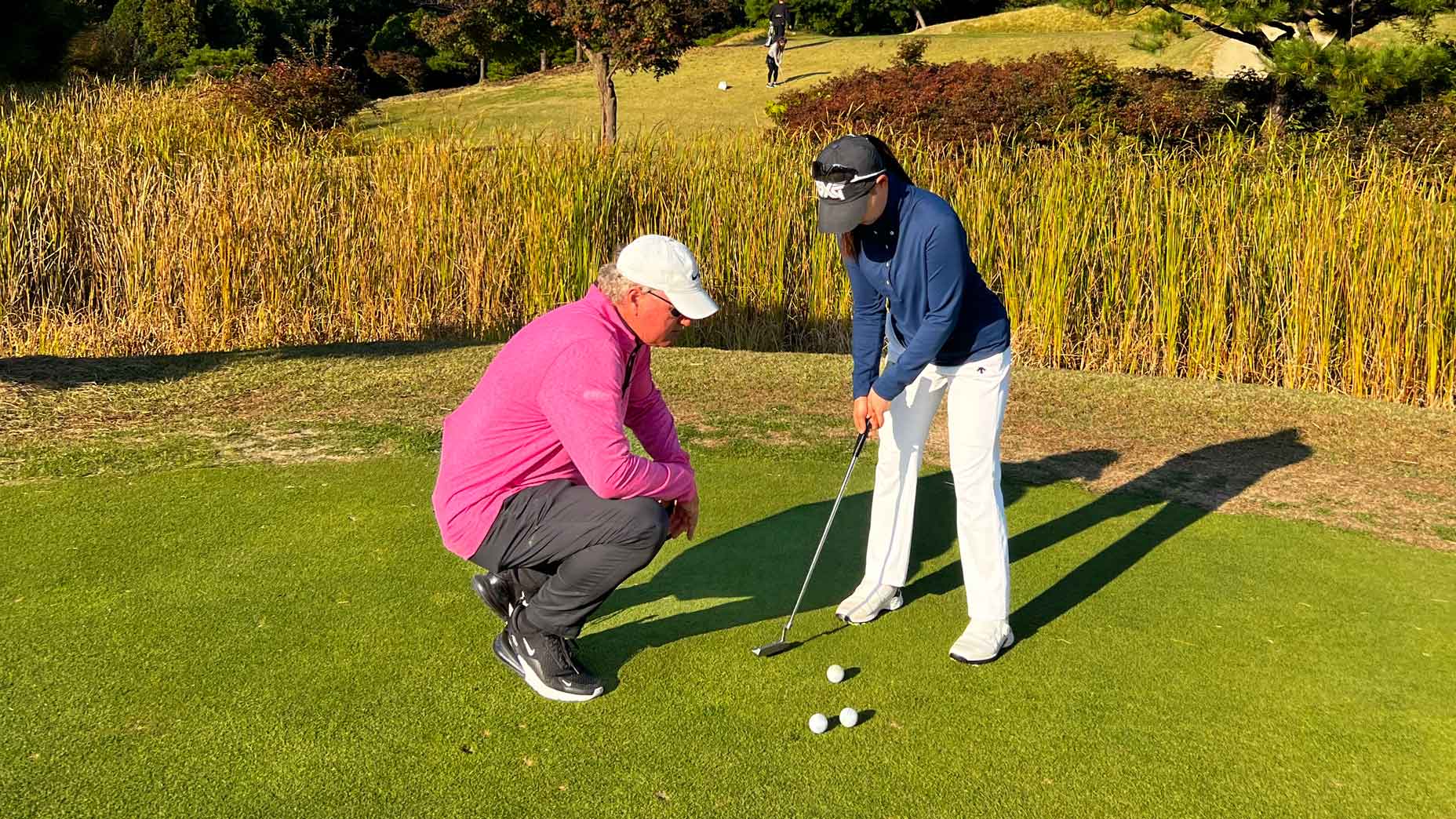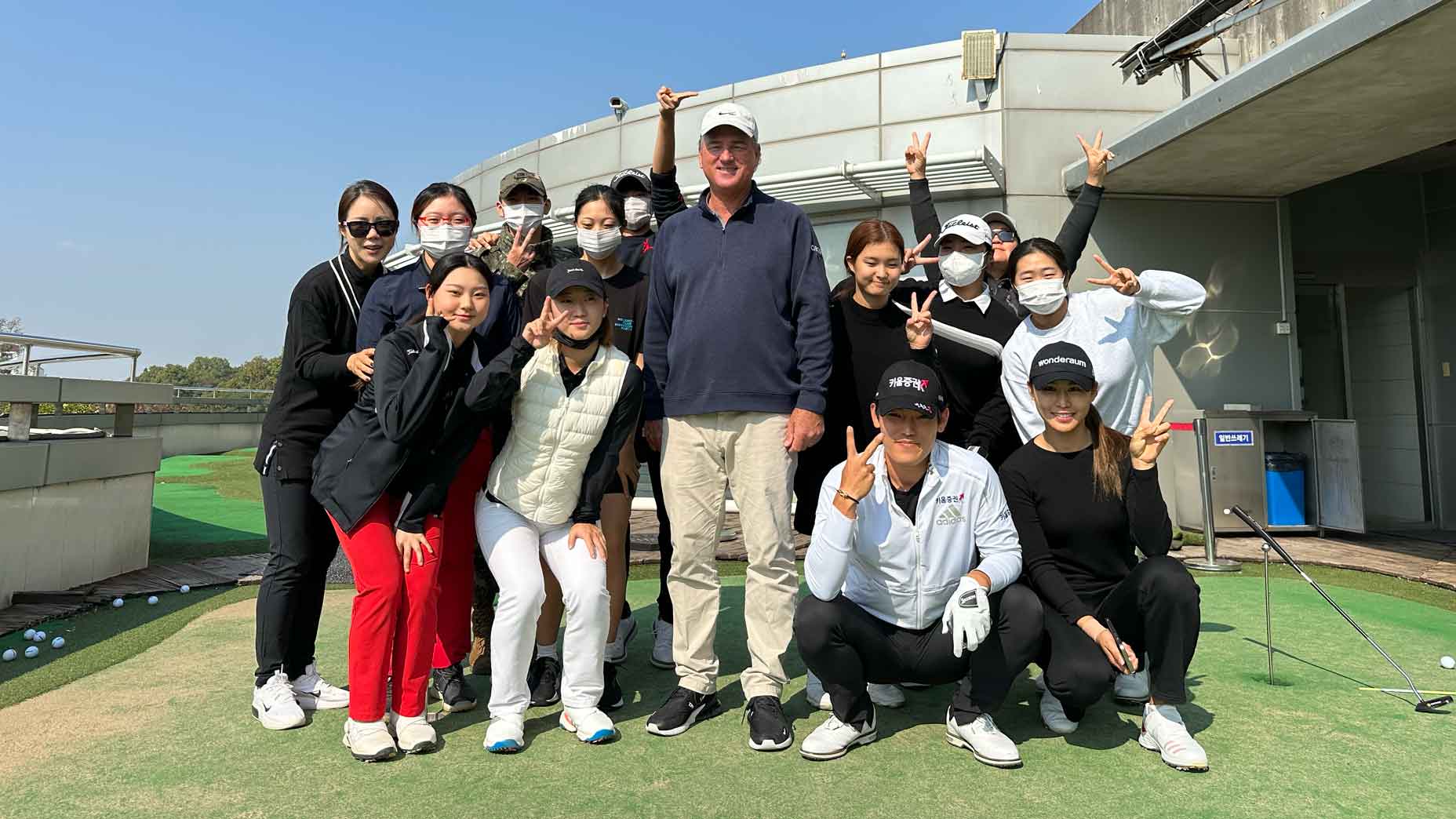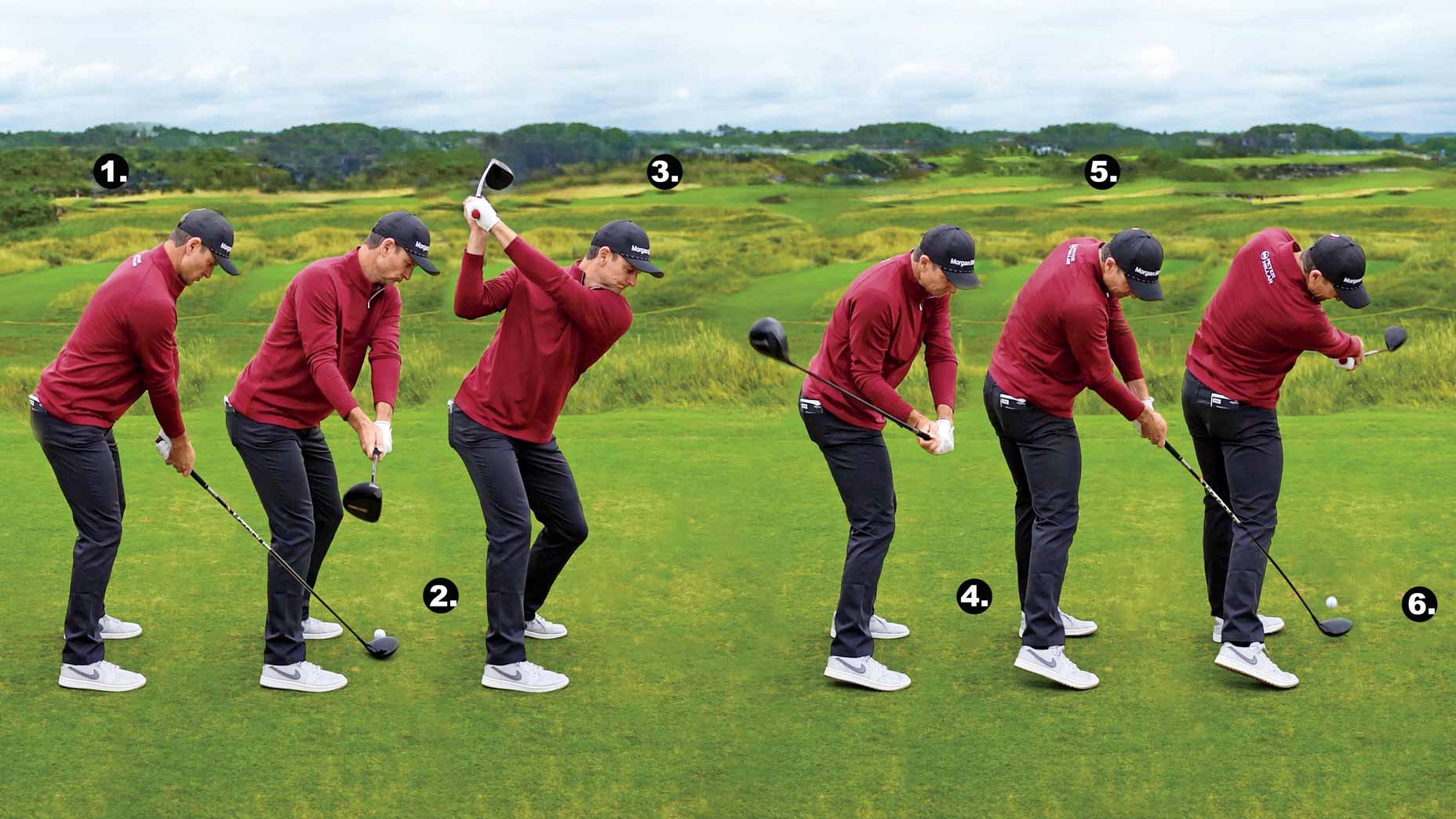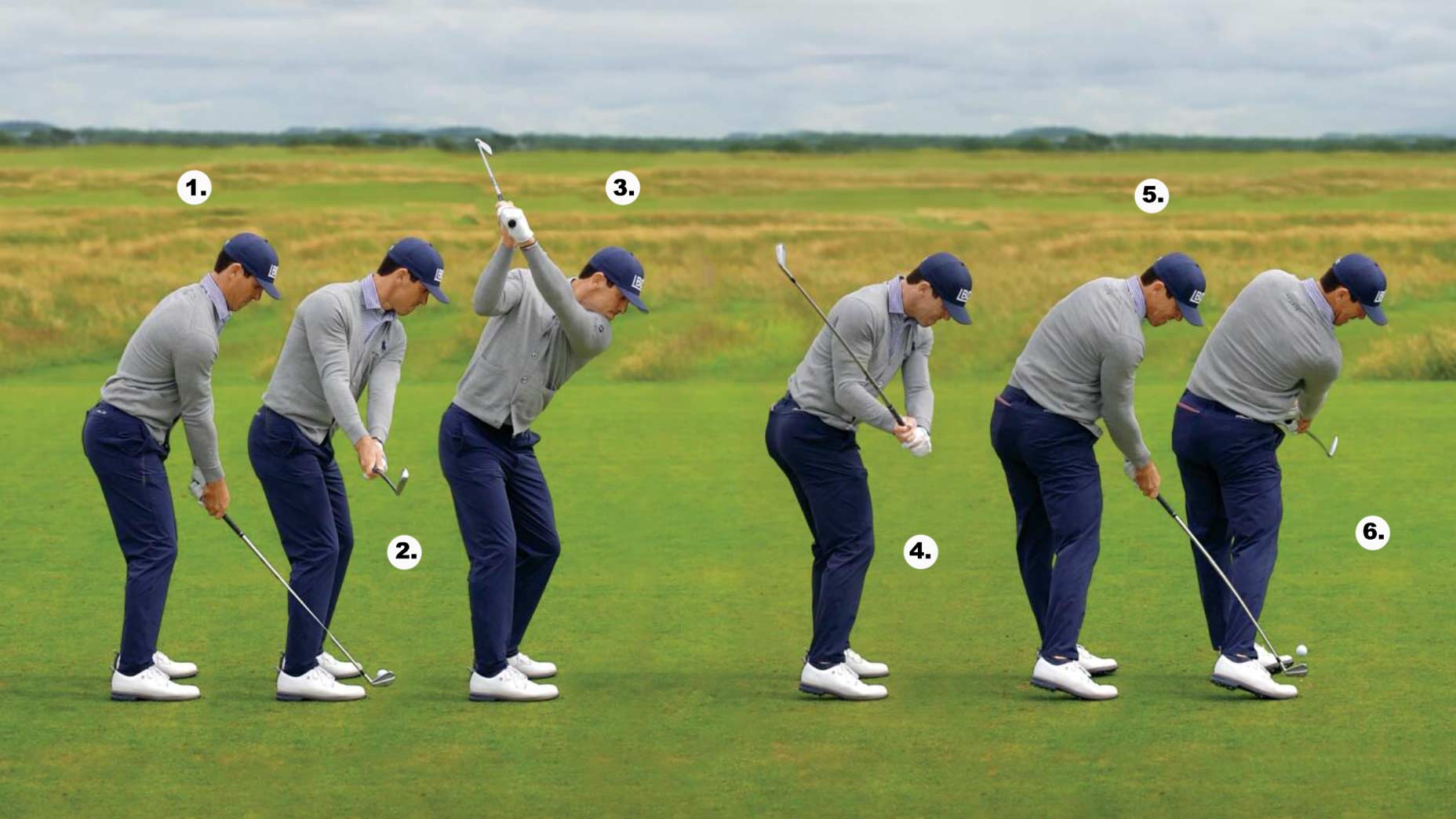We each know the moment we fell in love with the game. Many of us around my age (40) summon the image of 21-year-old Tiger Woods walking off No. 18 at Augusta National after his runaway win at the 1997 Masters. It wasn’t just the fiery uppercut after holing out, it was Woods’ embrace of his father, Earl, that forever fused the emotion, exhilaration and inspirational power of the sport.
What was that collective moment — or who was that galvanizing hero — for the people of South Korea?
“Easy answer: Se-Ri Pak,” says GOLF Top 100 Teacher Brian Mogg, who’s run an academy in the country since 2009. “Some of the kids who are 20 or 22 years old, we ask them how they got here, what their reason for playing is. They all say the same thing: ‘When I was three years old, I saw Se-Ri on TV holding up a trophy and I wanted to be like her.’ ”
To truly understand why Pak — a 25-time winner on the LPGA Tour and 2007 inductee into the World Golf Hall of Fame — remains a cult icon in South Korea, you first have to familiarize yourself with a culture that puts powerful emphasis on pride, discipline, competitiveness and respect. Ask any professional golfer what it takes to excel and those same words might surface.
It’s that attention to detail that has made South Korea a hotbed of golf instruction. But unlike in the States, the experience is more than just a few hours a week between student and teacher. It’s a lifestyle commitment that, often, involves the focus of a player’s entire family. Mogg understood this early on and employed former LPGA players to serve as coaches at his academy in Seoul. These aren’t just instructors; they purposefully play the role of parental figure for many of the students.
“They’re a big part of my success,” Mogg says.

Even with the encompassing support provided by Mogg’s team, parents are still heavily involved in every aspect of a player’s progress. Mogg remembers the all-in experience of one of his former students who eventually turned pro and, as is not uncommon in Korea, was counted on to increase the family’s fortunes.
“A lot of times, when a student shows up for their lessons, the family comes as well,” he says. “The family’s buying into the dream, and it’s the family’s dream to have this child raise them to a higher level. It’s bigger than just going pro. These kids are expected to be the next superstar.”
Perhaps for good reason. Children don’t play casual golf in Korea. They’re not even allowed on most courses. They are either on a competitive path or not, in part because instruction in the country is crazy expensive — about ten grand a month at a typical academy. That pressure rolls back on the player if they are lucky enough to make it on the pro circuit. And, remarkably, many do. In the current Rolex rankings, 30 of the top 100 female golfers in the world hail from Korea.
The Golf Fix(ation): Inside South Korea’s obsessive love of the gameBy: Josh Sens
Brian Mogg isn’t the only instructor struck by the intense commitment of young Koreans. Kenny Kim, a former U.C. Irvine collegian and pro who’s one of two Korea-based instructors at an academy owned by GOLF Top 100 Teacher Chris Mayson, grew up in Korea before moving to the U.S. at age 11 to pursue the game under the influence of his parents, who figured the States would better prepare him for a career in the sport.
After his playing days ended at age 29, Kim returned to Korea to focus on helping young golfers learn the game, using his own upbringing as a blueprint to connect with their values and hard work. His students work relentlessly.
“It’s Monday through Friday or Saturday,” he says. “These kids are here all day, every day. I know they’re committed.”
Everything, Kim says, is about competition. “[In Korea], kids will tell me how they need to shoot 80 to beat another kid. I’m like, ‘No, you just need to get better.’ ”
Another big difference between instruction in Korea versus the States? “We work on drills,” says Kim, “but we don’t really have access to golf courses.” Mogg echoes that, describing small side rooms in which students, with putting mats and eyeline mirrors, will spend hours practicing their stroke.
“An American player would literally spend 90 seconds there each day,” he says, “but these kids will put in an hour on a two- or three-foot putt, trying to see if they can start the ball dead straight.”
Why South Korea’s corporate spending on golf is good news for the gameBy: Michael Croley
There’s a widespread perception that Korean golfers spring from a rigid, assembly line system that stamps out robotic clones. In fact, that system not only allows for individualism, it encourages it. That’s another unique adjustment Mogg has had to make. Method teaching — in which you commit to just one style of instruction — isn’t considered acceptable in Korea. The most successful instructors take an approach that carefully caters to each student.
“While the Korean style of learning is more left-brained and technical,” Mogg says, “you still have to work with each person, to treat them as an individual and to make sure your lessons are being conveyed that way. I have to fight my natural instincts and [adapt] to how naturally they learn the best.”
Still, Mogg finds teaching in the country to be tremendously rewarding. He had the honor of coaching the first-ever major champion born in Asia, Y.E. Yang, who surged from behind to defeat Tiger Woods at the 2009 PGA Championship.
The memory is still fresh. “After Y.E. won the PGA, we landed in Seoul at 4:30 in the morning,” Mogg says. “Y.E. is holding the Wanamaker Trophy and we walk out of this little baggage claim area, turn the corner, and it had to be the equivalent of The Beatles coming to America — the hero returned home and all of Seoul was in the waiting room to greet and celebrate him.”
No doubt, somewhere in Seoul, a young Korean had eyes on Yang and his gargantuan trophy, maybe saw themselves in him and fell in love with the game.
We all have that singular moment.












